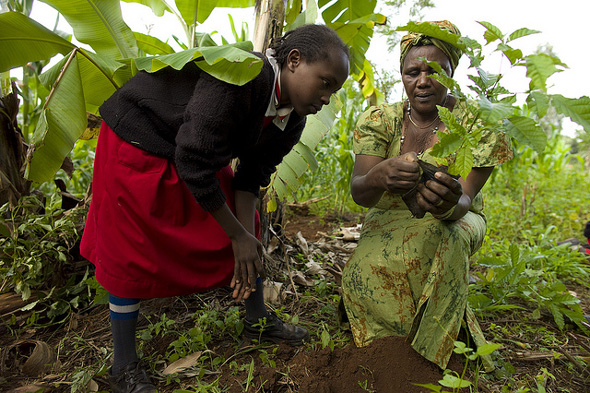-
‘Dialogue’ Discusses Hurricane Sandy and Climate Change Perceptions in the U.S.
›Did Hurricane Sandy change the discussion about climate change in the United States? In this latest episode of the Wilson Center’s Dialogue program, Senior Wilson Center Advisor and Ohio University Professor Geoff Dabelko joins host John Milewski to discuss the potential impact of Sandy on climate policy and dialogue in the United States with Darryl Fears (The Washington Post) and Bob Deans (Natural Resources Defense Council).
-
The Challenges of the 21st-Century City (Policy Brief)
›The Wilson Center Policy Briefs are a series of short analyses of critical global issues facing the next administration that will run until inauguration day.
We live in a world that is different from that inhabited by our ancestors in many profound ways. Among the most important changes is that, for the first time, almost half of the world’s people live in cities. According to the United Nations, in 2008 the global urban population surpassed half of the world’s population of 6.7 billion compared with 13 percent a century ago and 3 percent a century before that. This trend will require profound changes in the way the U.S. government addresses everything from development policy to international security.
-
Beyond Carbon Credits: TIST Combines Reforestation, Health, and Livelihood Efforts
›
Carbon offsets have fallen in and out of favor since they were established with the Kyoto Protocol in 1997. Critics say they allow wealthy organizations to placate consumers and claim their products are “green” without making any real, lasting changes. But, if the scheme works properly, some action is supposed to be taken somewhere, so what is it like at one of these credit-producing organizations?
-
Managing the Planet: The World at Seven Billion
›
Population growth “is highly concentrated in what are today the poorest and least well-governed areas of the world,” said George Mason University professor Jack Goldstone at the Wilson Center on December 5.
Goldstone was joined by Suzanne Ehlers, president and CEO of Population Action International (PAI), and Matthew Erdman, population-health-environment technical advisor at USAID, to discuss the implications of seven billion people and counting for the environment as part of the joint Wilson Center-George Mason University Managing the Planet series. [Video Below]
-
Climate Change’s Impact on Human Development
› One of the greatest challenges in addressing climate change is the uncertainty of outcomes. The world is warming and greenhouse gases are accumulating at an unprecedented rate – what does that mean for the future of human development? In Barry B. Hughes, Mohammod T. Irfan, Jonathan D. Moyer, Dale S. Rothman, and José R. Solórzano’s paper, “Exploring Future Impacts of Environmental Constraints on Human Development,” they describe three possible futures for the world (a base line scenario, an environmental challenge scenario, and an environmental disaster scenario) and their potential impact on the indicators of the Human Development Index (HDI). The environmental disaster projection features a flat-lining HDI starting around 2015, with global life expectancy at birth seven years shorter than the baseline in 2060. The report also notes that the future of the planet will be drastically different if the world population peaks “well before 2100,” as is the case in the base line scenario, or continues to grow, as it does in the other scenarios.
One of the greatest challenges in addressing climate change is the uncertainty of outcomes. The world is warming and greenhouse gases are accumulating at an unprecedented rate – what does that mean for the future of human development? In Barry B. Hughes, Mohammod T. Irfan, Jonathan D. Moyer, Dale S. Rothman, and José R. Solórzano’s paper, “Exploring Future Impacts of Environmental Constraints on Human Development,” they describe three possible futures for the world (a base line scenario, an environmental challenge scenario, and an environmental disaster scenario) and their potential impact on the indicators of the Human Development Index (HDI). The environmental disaster projection features a flat-lining HDI starting around 2015, with global life expectancy at birth seven years shorter than the baseline in 2060. The report also notes that the future of the planet will be drastically different if the world population peaks “well before 2100,” as is the case in the base line scenario, or continues to grow, as it does in the other scenarios. -
‘The Christian Science Monitor’ Explores the Global Water Crisis: Should We Charge More for Water?
›
“There is as much of that water on the planet today as when the first amphibian flopped ashore; as much as when the ancient Greeks divined the future in the babble of brooks,” writes William Wheeler in The Christian Science Monitor. “So why do experts in science, economics, and development warn that a ‘global water crisis’ threatens the stability of nations and the health of billions?”
-
Top 10 Posts for November 2012
›Population and environment stories nearly swept the top 10 last month (ranked by unique pageviews). Sean Peoples’ first short film on population, health, and environment projects in Tanzania led the charge, followed by a guest post from Tim Tear and Craig Leisher of The Nature Conservancy; Ken Weiss’ Beyond Seven Billion event; Elizabeth Leahy Madsen’s look at Yemen’s demography; Kathleen Mogelgaard’s post on next steps for incorporating population dynamics in climate change; and a summary of Joel Cohen’s 45-minute YouTube introduction to demography for the Floating University.
-
Water Scarcity, Agriculture, and Energy Are Focus of ‘Choke Point: China Part II’
›With the start of part two of Circle of Blue and the China Environment Forum’s Choke Point: China series, the focus has broadened from looking more narrowly at water scarcity and energy to including the effects of food security and pollution in China too.
“From an environmental point of view,” said Circle of Blue Senior Editor Keith Schneider, the question is, “can a nation that big, operating at such a scale maintain its sustainability?”
Showing posts from category *Blog Columns.







